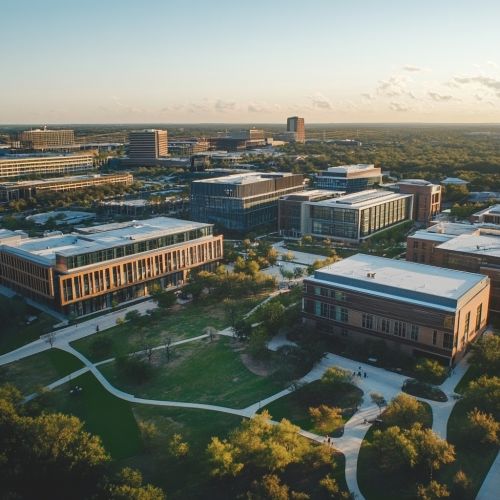Higher education in Texas
Overview
Higher education in Texas is a complex and multifaceted system that encompasses a wide range of institutions, programs, and policies. As the second-largest state in the United States by both area and population, Texas has developed a robust higher education infrastructure to meet the diverse needs of its residents. This article explores the historical development, current landscape, and future trends of higher education in Texas, providing a comprehensive overview of its institutions, governance, funding, and challenges.
Historical Development
The history of higher education in Texas dates back to the early 19th century, with the establishment of institutions such as Baylor University in 1845 and the University of Texas at Austin in 1883. These early institutions laid the foundation for a growing network of public and private universities and colleges. The Morrill Act of 1862, which led to the creation of land-grant universities, played a significant role in expanding higher education in Texas, resulting in the establishment of Texas A&M University in 1876.
Throughout the 20th century, Texas experienced significant growth in its higher education sector, driven by population increases and economic development. The Texas Higher Education Coordinating Board (THECB) was established in 1965 to oversee and coordinate the state's higher education system, ensuring that it met the needs of students and the workforce.
Institutional Landscape
Texas is home to a diverse array of higher education institutions, including public universities, private colleges, community colleges, and technical schools. The state's public university system is divided into several major systems, including the University of Texas System, the Texas A&M University System, and the Texas State University System. These systems collectively serve hundreds of thousands of students and offer a wide range of undergraduate, graduate, and professional programs.
Community colleges play a crucial role in Texas's higher education landscape, providing accessible and affordable education to a large number of students. The state has over 50 community college districts, which offer associate degrees, certificates, and workforce training programs.
Private institutions, such as Rice University and Southern Methodist University, also contribute to the state's higher education offerings, providing specialized programs and research opportunities.


Governance and Policy
The governance of higher education in Texas is primarily the responsibility of the Texas Higher Education Coordinating Board (THECB), which sets policies and priorities for the state's public institutions. The THECB is tasked with developing a strategic plan for higher education, known as the Texas Higher Education Plan, which outlines goals for increasing access, affordability, and success in higher education.
Each public university system in Texas has its own board of regents, which oversees the administration and operation of the institutions within the system. These boards are responsible for setting tuition rates, approving budgets, and appointing university presidents.
Funding and Financial Aid
Funding for higher education in Texas comes from a combination of state appropriations, tuition and fees, federal grants, and private donations. State funding is allocated through a formula that considers factors such as enrollment, program costs, and institutional performance. However, fluctuations in state funding have led to increased reliance on tuition and fees, raising concerns about affordability for students.
To address these concerns, Texas offers a variety of financial aid programs, including the Texas Grant Program, which provides need-based grants to eligible students attending public institutions. Additionally, the state offers the Texas Tuition Promise Fund, a prepaid tuition plan that allows families to lock in current tuition rates for future use.
Challenges and Opportunities
Higher education in Texas faces several challenges, including demographic shifts, funding constraints, and the need to align educational outcomes with workforce demands. The state's rapidly growing and diverse population requires institutions to adapt their programs and services to meet the needs of a changing student body.
Additionally, the increasing cost of higher education poses a significant barrier to access and success for many students. Addressing these challenges requires innovative solutions, such as expanding online education, enhancing partnerships with industry, and implementing performance-based funding models.
Despite these challenges, Texas's higher education system also presents opportunities for growth and innovation. The state's strong economy and vibrant industries create demand for skilled graduates, providing institutions with the impetus to develop cutting-edge programs and research initiatives.
Future Trends
Looking ahead, several trends are likely to shape the future of higher education in Texas. The continued expansion of online and hybrid learning models is expected to increase access and flexibility for students, particularly those in rural or underserved areas. Additionally, the integration of technology and data analytics into teaching and learning processes will enhance educational outcomes and support personalized learning experiences.
The emphasis on workforce alignment will continue to drive the development of programs that meet the needs of Texas's key industries, such as energy, healthcare, and technology. Collaboration between higher education institutions and industry partners will be crucial in ensuring that graduates possess the skills and competencies required in the modern workforce.
